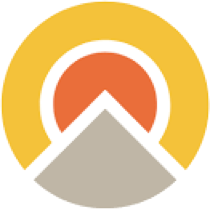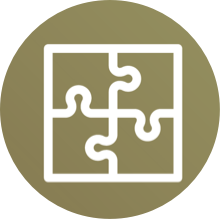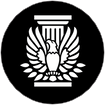Are you ready for winter?

New ideas arise from hybrids
Fall is fascinating! It’s grey and blustery one day, with a bright golden sunrise the next. The trees are changing almost before our eyes. As the dog days of summer gradually give way to the first crisp snaps of winter cold, every day is a little different. And that’s alright by us! We’ve found that the most interesting parts of life are often discovered ‘in-between’. That goes for careers, too. In this month’s “On Our Minds…”, we take a look at creative and analytical work, and that oh-so-interesting hybrid space in the middle or, with both.
On our minds
Sometimes the best ideas come from unexpected places. While one might expect that long-time practitioners in a given field would be the ones coming up with ground-breaking ideas, that isn’t always the case. For instance, the best folks to come up with better safety equipment for carpenters might not be carpenters; they might be inline skaters. Or, a little closer to our own bailiwick, maybe a person who would make a really great social scientist actually started their career in particle physics—here’s looking at you, Karen Stephenson!
We’ve seen how the right mix of creativity and analysis is key to making the most out of all of the data that is now available in workplaces. There’s Big Data—information from building systems such as lighting, HVAC and IOT device tracking, as well as data from social platforms such as Twitter and Foursquare. Then there’s Medium Data from surveys and observational studies, and Little Data from one-on-one interviews and other individual stories. To arrive at a holistic picture of a workplace, we need an analytical mind that can understand all those types of data, but then we also need to think creatively in order to spot the connections, correlations, and contradictions between them.
We love hybrid thinkers, and we don’t mind saying that we have had quite a few of them haunting our own halls over the years. PLASTARC Design Analyst Varis Niwatsakul is one, he shared some thoughts about why a blended skillset matters so much in the work that we do: "Looking for insight is all about turning data into information and information into actionable knowledge. Analytical skills help you rigorously and methodically comb through the data to find any discrepancies or patterns. Creativity helps you imagine new ways of putting the data together to create compelling propositions and ask really good questions. Both are required to arrive at actionable insights."
These days, we’re seeing hybrids everywhere: the growing field of workplace anthropology is a great example of applying one way of thinking to another domain. Anthropology as a field has been around since the Renaissance. Likewise, business and management have been approached scientifically since at least the late 1800s. In recent years, workplace practitioners have recognized the value of combining them. PLASTARC alum Claire Rowell says, "There’s an exciting opportunity for business to learn from these social research methods—particularly at a time when real estate leaders and facilities managers are being asked to prove more and more the value of each square foot."
Real estate isn’t the only field in which a hybrid mind is rewarded. Just about any scientific or design-related pursuit requires both creative and analytical abilities. As we discussed in our presentation at this year’s EDRA conference, science and design are different but complementary ways of looking at the world. On one hand, science is concerned with discovering what is true (natural laws and principles of behavior), while the goal of design is to influence—to shape conditions and outcomes. Effective work requires both perspectives; a scientist wouldn’t learn very much without the ability to design an interesting experiment, and an architect’s buildings would fall down if they were to neglect their engineering.
Another PLASTARC colleague, Jonah Bleckner offered a tip o’ the hat to one of his hybrid heroes, Sendhil Mullainathan. A professor of computation and behavioral science at the University of Chicago, this work highlights how multidisciplinary thinking can be applied to a broad range of problems. In Scarcity, he and co-author Eldar Shafir stitch together cognitive science and behavioral economic research to show how having less than one needs profoundly shapes decision-making. The insights can inform everything from the design of workplace environments to anti-poverty programs.
This brings us to our larger point; when people and organizations think about work in only one dimension—when they frame work as "left brain" or “right brain”—they might miss the big picture. For example, research has shown that job titles impact performance. If a person’s title is simply some version of “Analyst”, there’s an implication that they should be spending their whole day crunching numbers. When one person on a team is called a “Creative”, it sends a signal that other people don’t have, or need to use, their creative abilities. Instead, why not give people titles that encourage them to think more broadly about what they do and the contribution they can make?
Workplace Anthropologist, Sociospatial Analyst, Design Strategist—these aren't just fancy-sounding titles for our business cards. They reflect both our dedication to seeing things from many perspectives and the practical aspects of what we do. They declare, from the get go, that we want our teammates to embrace diverse, multidisciplinary approaches in their work, blending the quantitative and qualitative, the cultural and the physical. Nature shows us that the most diverse group is the one that is best suited to face whatever challenges the seasons may bring.
From the archives
Fall has a way of conjuring nostalgia; we’re remembering this piece we wrote last fall for Work Design Magazine. With a look at how data is used in Hospitality, Education and Retail, it explores how other industries make creative use of data, and how workplaces might do the same
Also from the stacks of our totally-not-haunted library a look at the history of the AIANY Committee on Social Science and Architecture. Working to increase collaboration between social science and design, it’s a house of hybrids if ever we’ve seen one!
We’re off to find a pile of leaves to jump in. Do you have a hybrid hero or a challenge that could benefit from one? Do share! Drop us a line.
In Case You Missed It
Fall is an invigorating time, full of opportunities to learn and grow. Here’s what grabbed our attention this month.

Biotech Investing 101
The MIT Club of New York convened this panel about the rapid growth of startups in biotech, PLASTARC hosted at WeWork.

CoreNet Global Summit
The annual CoreNet North America summit came to Disney Land, a perfect place to discuss the importance of workplace experience.

Workspace of Tomorrow
PLASTARC appeared with ROOM on this panel to talk about the power of choice to support wellness and performance in the workplace.

Wood @ Work
During UN Climate Week, experts gathered to discuss sustainable building with wood, and how cities can support healthy forests.

Even the Supreme Court is talking about restrooms
The highest court in the land grapples with inclusion in restrooms.

Rubber Ducks get their due
If the fall makes you long for times gone by, you’ll love this surprisingly-detailed global history of the most iconic of bathtub toys.
Looking Ahead
It’s harvest time! There’s a bumper crop of workplace goodies on offer this month.






